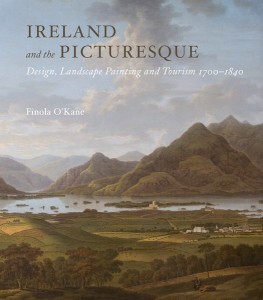St. Patrick’s Day
Ivy Sanders Schneider–
Saint Patrick, patron saint of Ireland, is commonly associated with his eponymous holiday, the color green, shamrocks, and for driving the snakes out of Ireland. However, Patrick, born Maewyn Succat in Roman Britain around 390 AD was not Irish, but British; was never officially canonized as a saint; and couldn’t have driven the snakes out of Ireland, as there were no snakes to begin with. St. Patrick’s real history, like the history of the country of Ireland itself, is more complex and intriguing than the popular folk history with which people are most familiar.
St. Patrick came from a wealthy slave-owning Christian family. His father was a deacon, and his grandfather a priest, although as a child St. Patrick had little interest in religion. That changed at 16, when St. Patrick was abducted by a slave ship and taken to Ireland, where he lived in captivity for six years. During that time Patrick became more religious. In Confessions, his memoir, he wrote of his spirituality during his imprisonment – “The love of God and his fear grew in me more and more, as did the faith.” Patrick continued, “I prayed in the woods and on the mountain, even before dawn. I felt no hurt from the snow or ice or rain.”
Eventually, Patrick escaped his captivity. Voices in his dreams urged him to return home, and so he traveled 200 miles to Ireland’s west coast, where he managed to board a pirate ship, which sailed him to Britain.
In England, reunited with his family, Patrick studied and became ordained as a priest. Although happy to be a free man again, the voices in his sleep returned. At 33, Patrick had a vision of Victoricus, a 3rd century martyr and Christian missionary, who urged him to journey back to Ireland and spread his faith, so Patrick returned to the country that had enslaved him, where he would stay and preach for the rest of his life.
Patrick attempted to convert the people of Ireland to Christianity, building 300 churches, and baptizing over 100,000 individual Irishmen and women (the myth regarding the driving out of snakes  probably symbolizing Patrick’s erasure of paganism). Although successful, Patrick was forgotten for many years – the first St. Patrick’s Day, which marks the day of Patrick’s death, wasn’t until 1737 and wasn’t even in Ireland, but America. The first St. Patrick’s Day parade was a procession of soldiers in New York City in 1766, and traditions like dying the river green in Chicago didn’t originate until the 1960s, the same decade in which Ireland began to seriously celebrate its own patron saint.
probably symbolizing Patrick’s erasure of paganism). Although successful, Patrick was forgotten for many years – the first St. Patrick’s Day, which marks the day of Patrick’s death, wasn’t until 1737 and wasn’t even in Ireland, but America. The first St. Patrick’s Day parade was a procession of soldiers in New York City in 1766, and traditions like dying the river green in Chicago didn’t originate until the 1960s, the same decade in which Ireland began to seriously celebrate its own patron saint.
Originally a religious feast day, it has become a celebration across the world of all things Irish. If you’re looking to celebrate Irish culture this St. Patrick’s day, three recent books can provide varied, deep looks at that rich culture. Ireland and the Picturesque by Finola O’Kane celebrates the 18th century Island landscap e, a landscape similar to what St. Patrick might have experienced in his three decades of travel across the country. The lushly illustrated Ireland: Crossroads of Art and Design, 1690-1840 edited by William Laffan and Christopher Monkhouse, with Leslie Fitzpatrick, looks at the collaboration between foreign and native artists, artisans, and architects, and includes essays on the arts, Irish landscape, and Dublin as a center of “culture and commerce.” And the monumental 5-volume set Art and Architecture of Ireland covers medieval history, painting, sculpture, architecture, and the twentieth century. This set “provides an authoritative and fully illustrated account of the art and architecture of Ireland from the early Middle Ages to the end of the 20th century,” and at 3000 total pages, it is an imposing, comprehensive compendium of the Emerald Isle’s art and architectural heritage.
e, a landscape similar to what St. Patrick might have experienced in his three decades of travel across the country. The lushly illustrated Ireland: Crossroads of Art and Design, 1690-1840 edited by William Laffan and Christopher Monkhouse, with Leslie Fitzpatrick, looks at the collaboration between foreign and native artists, artisans, and architects, and includes essays on the arts, Irish landscape, and Dublin as a center of “culture and commerce.” And the monumental 5-volume set Art and Architecture of Ireland covers medieval history, painting, sculpture, architecture, and the twentieth century. This set “provides an authoritative and fully illustrated account of the art and architecture of Ireland from the early Middle Ages to the end of the 20th century,” and at 3000 total pages, it is an imposing, comprehensive compendium of the Emerald Isle’s art and architectural heritage.
Ivy Sanders Schneider, a sophomore English major in Yale College, is an art & architecture intern at Yale University Press.























